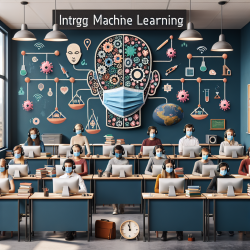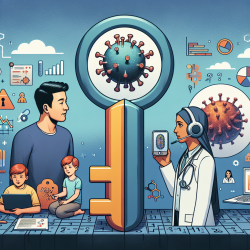The COVID-19 pandemic has reshaped educational landscapes globally, compelling institutions to transition from traditional face-to-face teaching to emergency remote teaching and learning (ERTL). A recent study titled "Application of machine learning approaches to analyse student success for contact learning and emergency remote teaching and learning during the COVID-19 era in speech-language pathology and audiology" provides critical insights into the impact of these transitions on student performance. This blog delves into the study's findings and explores how practitioners can leverage these insights to enhance student outcomes.
Key Findings
The study employed machine learning (ML) techniques such as K-means clustering and Random Forest classification to analyze student performance data from 2018 to 2021. Key attributes influencing student success included funding type, age, and high school quintile. Notably, self-funded students from lower quintiles were disproportionately affected during the pandemic, highlighting the critical role of financial support in academic success.
Implications for Practitioners
Understanding these attributes allows educators to implement targeted interventions. Here are some practical steps practitioners can take:
- Early Identification: Use ML models to identify at-risk students early in the academic year. Focus on attributes like funding type and high school quintile to predict potential challenges.
- Customized Support: Develop tailored support programs for self-funded students from lower quintiles. This could include financial aid, academic tutoring, and psychological support.
- Hybrid Learning: Embrace hybrid learning models that combine the strengths of face-to-face and online teaching. This flexibility can accommodate various student needs and improve overall performance.
- Resource Allocation: Prioritize investment in digital technologies and training for both staff and students to ensure smooth transitions between learning modes.
Encouraging Further Research
While the study provides valuable insights, it also opens avenues for further research. Future studies could explore the long-term impact of hybrid learning models on student success and the role of other socio-economic factors. Additionally, investigating the efficacy of different intervention strategies could provide a more comprehensive understanding of how to support diverse student populations effectively.
Conclusion
The application of machine learning in analyzing student performance offers a data-driven approach to improving educational outcomes. By leveraging these insights, practitioners can develop targeted interventions, foster a supportive learning environment, and ultimately enhance student success in speech-language pathology and audiology programs.
To read the original research paper, please follow this link: Application of machine learning approaches to analyse student success for contact learning and emergency remote teaching and learning during the COVID-19 era in speech-language pathology and audiology.










